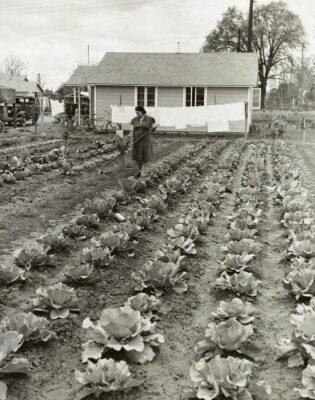Planting heirloom seeds in your vegetable or “victory garden” could be one of the single best ways to celebrate Memorial Day.
Heirloom Seeds are natural seeds harvested from plants descended from those grown by our Colonial and Pioneer ancestors. The difference between Heirloom Seeds and most commercial seeds is genetic engineering.
Most of the seeds sold in big box stores are genetically modified not to pollinate. That means plants grown from the seeds will not produce new generations of seeds. Such seeds are a poor choice for subsistence or survival agriculture.
Heirloom Seeds [2] are natural and capable of pollination. That means they will produce new seeds and ensure future generations of crops.
It also means that you can garden like the pioneers, who did not buy new seeds each year from stores. The pioneers harvested the seeds they used from the crops they grew the previous year. They created sustainable, environmentally-friendly agriculture, and a food source they controlled.
Plant a Victory Garden!
An excellent way to celebrate Memorial Day is to plant a Victory Garden [3]. During World War Two the U.S. government encouraged all Americans to grow their own vegetables to free up resources for military production.
An estimated 20 million Americans planted Victory Gardens in their backyards, on vacant lots in the city, and on rooftops. Cooperatives and neighborhood groups operated many of those gardens.
The program worked too as it produced between nine and 10 million tons of food. That food helped America field up to 12 million fighting men and women in the armed forces.
Planting a Victory Garden is a great way to honor the memory of both the GIs of the Greatest Generation and the people who supported them on the home front. Gardening also passes on the values of those men and women; including their patriotism, sense of duty, strength of character, and spirit of self-sufficiency. A Victory Garden is a great way to teach some of those values to your kids and grandkids.
The History of The Victory Garden
Such a campaign was necessary because food production fell because large numbers of men; who did the farm labor, were off fighting in the trenches. To increase food production, the Ministry of Agriculture encouraged every Canadian family to grow a good, can food, and keep chickens to produce eggs.
When the United States entered World War I, a National War Garden Commission was established to encourage Americans to emulate the Canadian effort. The commission organized a “United States School Garden Army” to encourage children to garden.
By the end of the war, American families had produced $1.2 billion worth of food in five million War Gardens. The phrase Victory Garden probably originated with a World War I propaganda poster that encouraged Americans to “Sow the Seeds of Victory.”
Digging for Victory
During World War II the British and Australian governments encouraged citizens to start “Digging for Victory” or “Dig On for Victory.”
In the United Kingdom, sports fields and golf courses were requisitioned and turned into Victory Gardens. Sections of the lawn in London’s famous Hyde Park were transformed into Victory Gardens. Even the Royal Family planted Victory Gardens at Windsor Castle and Buckingham Palace. The British government also established County Herb Committees to gather medicinal herbs for use in the war effort.
Contrary to popular belief most American Victory Gardeners in World War II were not motivated by patriotism. A 1942 poll found that 54% of the people said they planted Victory Gardens for economic reasons to get cheaper food. Only 20% pointed to patriotism as their motivation for gardening.
Today’s Americans should follow the Greatest Generation’s lead and plant their own Victory Gardens with high germination heirloom seeds. That way you can save money, help the environment, eat healthier, get some exercise, and pass on American Values at the same time.
Using Heirloom Seeds [2] will also make your Victory Garden more economical and sustainable because you will not need to buy new seeds in the future. Planting a Victory Garden with Heirloom Seeds is the perfect way to celebrate Memorial Day.
